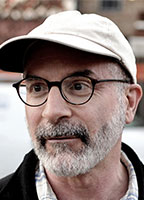Skeletal muscle has remarkable capacity for regeneration after injury. This capability derives from resident muscle stem cells, known as satellite cells. Satellite cells reside in a specialized microenvironment, or niche, which supports their behavior.
During normal homeostatic maintenance of adult muscle, satellite cells are quiescent and play little role in muscle maintenance. Following injury, however, they proliferate as transit-amplifying myoblasts, and differentiate to repair damaged fibers or generate new ones. Satellite cells also undergo self-renewal to replenish the stem cell pool, enabling a response to potential future injuries.
Skeletal muscle is an ideal system for addressing questions about how stem cells are maintained within their niche over long periods of time, how complex tissues regenerate in response to insult, and how stem cells become exhausted during the progression of diseases such as muscular dystrophy. Investigators at the Black Family Stem Cell Institute address these questions with a combination of animal models, in vitro systems, and human samples, with the goals of understanding fundamental concepts in stem cell biology and furthering regenerative medicine.
Investigators with a major focus in muscle stem cell research include:

